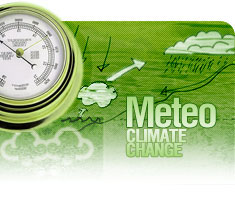http://article.wn.com/view/2009/12/02/Climate_Change_Impact_on_Nepal/
The Earth’s climate is unique as it supports life due to the availability of oxygen in atmosphere, water on its surface and the occurrence of reasonable range of surface temperature due to the presence of naturally occurring green house gases (water vapor, carbon dioxide, methane, and nitrous oxide). Climate thus, has been playing central role in human societies since long. However, humanity today is playing a dice with its natural environment through multitude of interaction- injecting trace atmospheric gases like the green house gases, engineering massive land use change, depleting species in the natural habitat and accumulating stockpiles of nuclear equipment sufficient to destroy human civilization.
Even a minimal change in climate can have disastrous consequences for natural ecosystem notably drought, desertification, flood and geo-physically related problems like land slide and soil erosion. Consequently, this variability may pose greater risk of different dimension.
Nepal’s contribution to global warming is rather insignificant. In particular, the emission of CO2 (carbon dioxide) and other global warming gases due to the combustion of fossil fuel is even more negligible. An emission of 1465 Gg (Gega gram) of CO2 was estimated in 1994 caused by combustion of fossil fuel. Similarly, the average production of methane from livestock and agriculture was estimated 867 Gg in the same year.
Global warming due to climate change means a bleak future. Since all the species exist in the complex web of interaction between them and climate, global warming will affect the entire plant kingdom in unpredictable ways. The most direct effect will be physiological involving temperature or moisture changes. Some plants will not thrive or set seed if it is too hot and too dry as higher temperature will lead to more evaporation increasing likelihood of drought. For example, in the southern slope of Kathmandu valley, due to rise in temperature in excess of 40 degree Celsius, evaporation has increased as high as 190 per cent during summer and consequently 70 percent of the indigenous vegetation of the valley has been replaced by exotic plants and only xerophytes have been found on the foothills of naked northern slopes. Some of the effects of this change especially on economy and agriculture have already been observed in Nepal. This fact is reflected by the decreasing trend of maize yield from 1890 kg/ha in 1975/76 to106 kg/ha in 1994.
Annually in Nepal, natural hazard causes loss of 500 lives on average and property worth several millions. Majority of these losses occur due to hydro-climatic disaster such as torrential rain, floods, soil erosion and landslides. Forested hill slopes are now in the process of turning into bare hills due to excessive soil erosion caused by rains. This process would then finally intensify desertification. In such a disaster scenario increase of monsoon precipitation may add more catastrophes in the country. Global climate change model has predicted that the rainy season in Nepal will be extended to June from July with more rainfall and the winter will be drier. Twenty four hours of extreme precipitation analyses indicate the whole of the Terai, which is the food bowl of Nepal, is susceptible to floods.
Changes in the position of glacier terminus reflect the mass balance condition of past years, and a general tendency of glacier fluctuation indicates a corresponding change in the climate. Study of glaciers in Nepal revealed that 66 per cent of the observed 494 glaciers had retreated during 1958-92. If these glaciers, which are the sources of our principal rivers ( Koshi, Gandaki and Karnali) will keep receding in such a fashion, they might no longer remain perennial. On the other hand, the amount of water from melting glaciers, released into the ocean will have a drastic effect on man and other species due to sea level rise. Besides, the glacier lake outburst flood is one of the most disastrous and significant phenomenon affecting current and future developments of water resources in the mountain region of Nepal.
It is clear that environment in Nepal, which is highly vulnerable to natural hazards and disaster, could face serious impact due to climate change. This will make the national efforts towards sustainable development even more difficult. However, commitment made in the UNFCCC (United Nations Frame work Convention on Climate Change) calls for extension of the cooperation, from the developed country to the developing country for the transfer of technologies, practices and process that control, reduce or prevent anthropogenic emissions of greenhouse gases from different sectors. Nepal should utilize this opportunity extending cooperation to the global community in order to minimize the climate change effect and seek some financial support and transfer of technologies for the same. Through cooperation and joint approach to this problem by every nation of the world global warming can be minimized and mother earth be saved.
|



 Română
Română English
English


